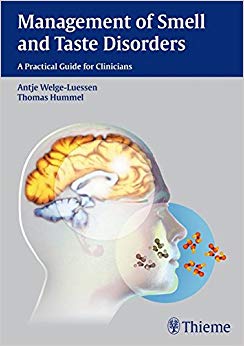
Given the wide range of medical conditions and external factors which can influence smell and taste, this book would be of interest and value to many clinicians, from ENT, head and neck, maxillo-facial and oral, to neurology, endocrinology and psychiatry, not to mention those with a medicolegal practice. A fascinating read. — Journal of Otolaryngology
Recent breakthroughs in the diagnosis and treatment of smell and taste disorders have dramatically altered clinical outcomes for these patients. In this important book, readers will get a full overview of the topic today, including functional anatomy, pathophysiology, diagnostic and clinical work-up, assessment techniques, medical and surgical options, and more. Focused and to-the-point, the book is especially designed for physicians treating patients in the everyday practice setting.
Special Features:
- Covers the most important advances in diagnostic and treatment techniques
- Provides a clear methodology for examining, testing, classifying, diagnosing, and treating a wide range of idiopathic, congenital, and acquired smell and taste disorders
- Explores the use of MRI for improved visualization of central olfactory areas, including the lesions and other disturbances that cause olfactory disorders
- Offers new information on the interaction between the chemical senses, especially important in medicolegal cases
- Includes more than 130 full-color diagrams, clinical pathways, tables, photographs, and anatomic illustrations that clarify all concepts
Complete with expert foundational chapters on the anatomy and structure of the olfactory and gustatory systems, as well as compelling information on quality-of-life issues, this book makes a major contribution to the field. It is essential for otolaryngologists, neurologists, internists, residents, and other specialists treating patients with smell and taste disorders in a modern clinical setting.

